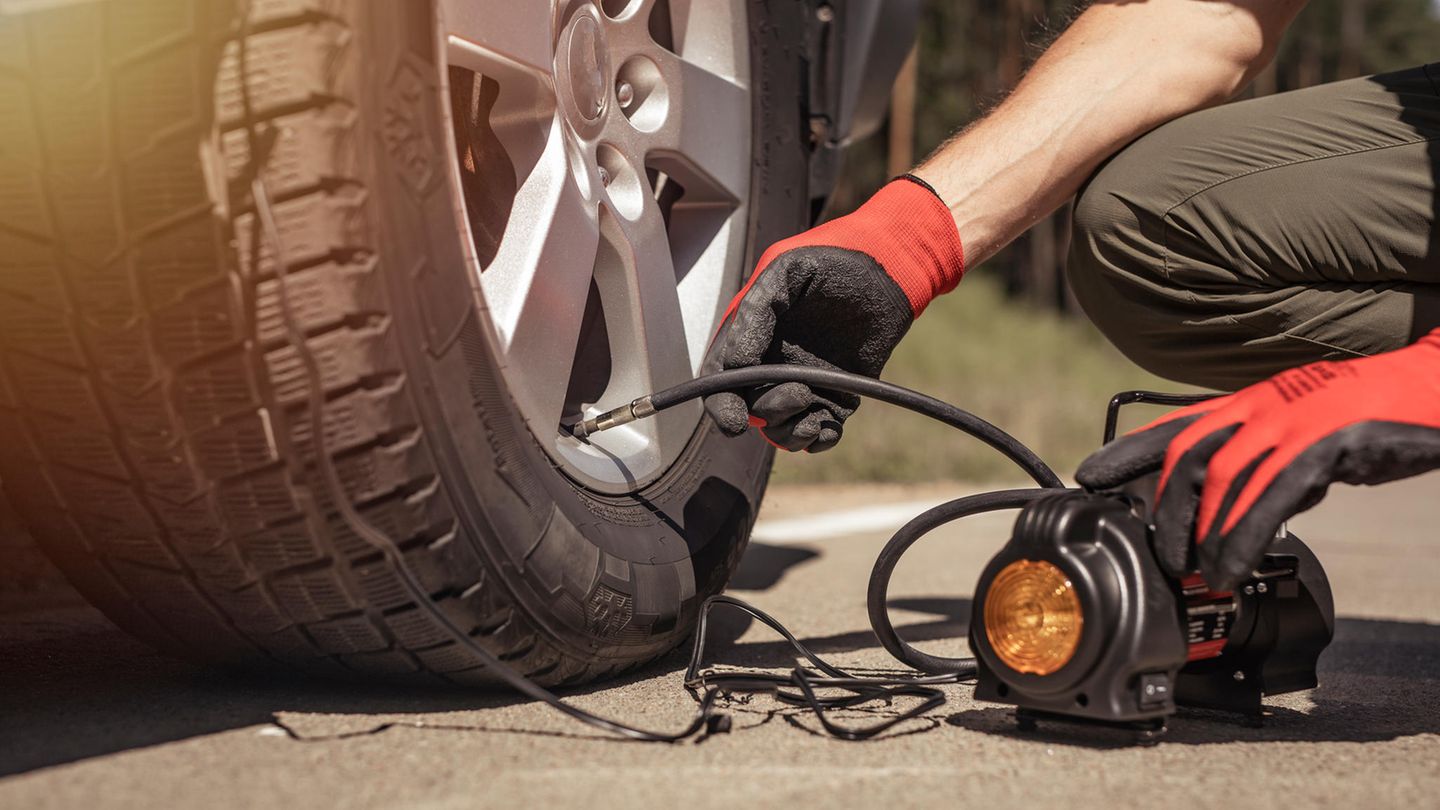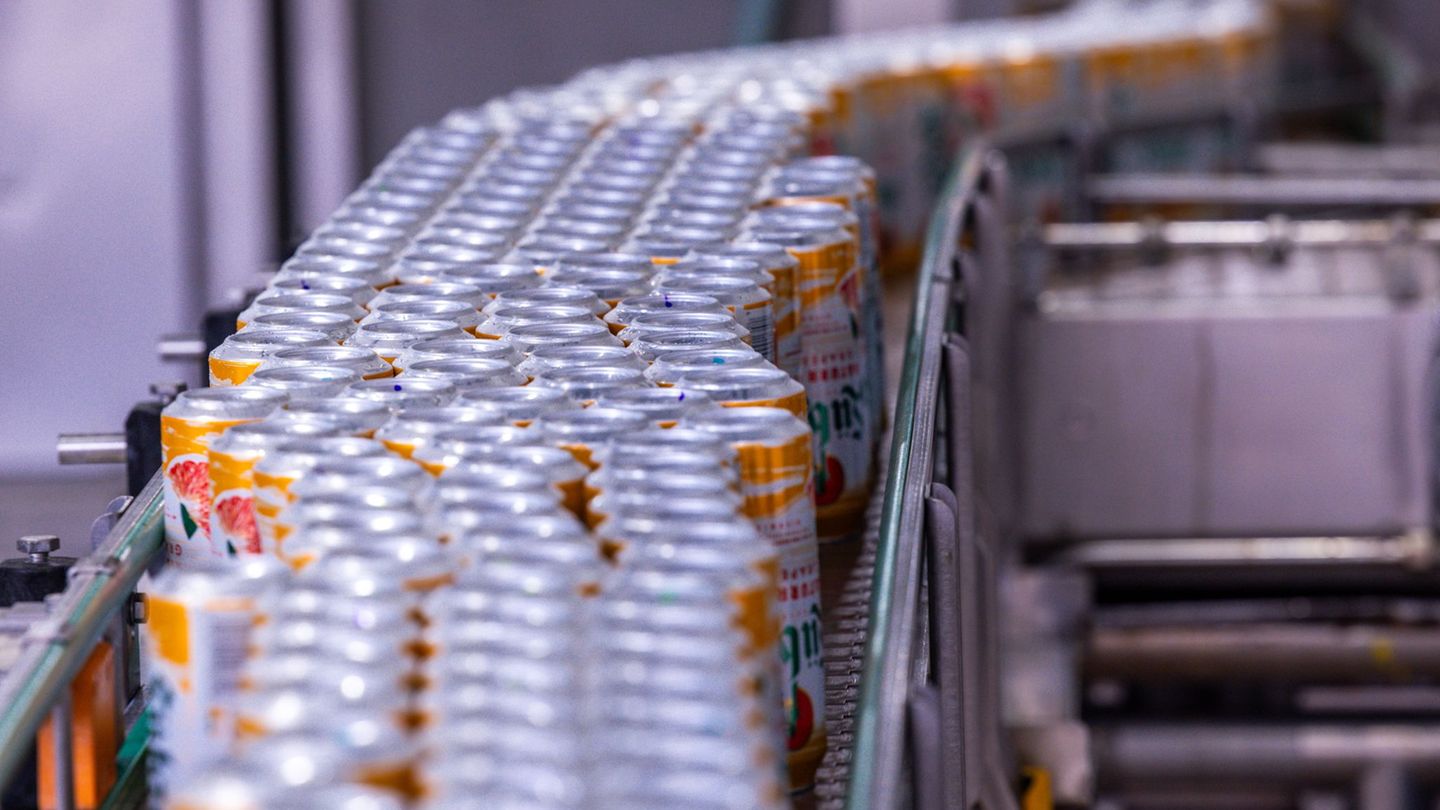Having a flat tire on the hard shoulder of the motorway is every driver’s nightmare. No spare tire on board? Then the only option is the tire repair kit. Advantages and disadvantages of puncture spray, tire sealant, etc.
According to the General German Automobile Club (ADAC), problems with the battery are by far the most common reason why drivers call the “yellow angels”. Only a few get help from the mobile mechanics because of a flat tire. In 2023, the yellow angels only had to put their hands on defective tires in just under nine percent of their approximately 3.5 million missions. That is fourth place in the breakdown statistics.
Why? Because a flat tire is pretty much the only problem that an average consumer and layman can solve on a car without a control device or automotive expertise. At least if you have a ready-to-use spare tire with the right tools or a practical tire repair kit and a small compressor for the necessary tire pressure on board. In this article, you will find out what is important in the event of a breakdown, how to use repair kits correctly and when there is no way around using a spare tire.
1. Tire repair spray
The most cost-effective option in the event of a flat tire. However, it is also one that only works reliably at temperatures between 5 and 30 degrees Celsius and is only recommended until you get to the nearest garage. The principle is simple. Foam or a liquid is sprayed into the tire via the valve using a spray can and seals the leak from the inside. Important: The corpus delicti should have a maximum diameter of five millimeters. Once sealed, the remaining gas in the can ensures the tire pressure that will get you to the nearest garage. If possible, do not drive the repaired tire faster than 50 kilometers per hour (km/h). Some manufacturers recommend letting off the gas after driving ten kilometers and pumping up the tire with a compressor. In any case, pay attention to the instructions for use on the tire puncture spray. Warning: Tire sprays and other sealants only seal leaks in the tread of tires. If the sidewall is damaged, they are ineffective. Also check regularly how long the product will last according to the manufacturer. Before longer trips, it may be worth replacing the old puncture spray with a new one.
2. Tire sealant
Work according to a similar principle in so-called squeeze bottles. The filling and sealing agent here usually consists of a latex or rubber mixture. In contrast to spray, squeeze bottles cannot be filled without additional out. In order to fill in the sealant, the valve insert must first be unscrewed from the tire. The tool required for this is usually part of the tire repair kit. Then an adapter is screwed onto the valve. Now you need some muscle, because the liquid won’t get into the tire on its own. Bottle empty? Then the compressor comes into play. It needs electricity and must be powered by the cigarette lighter or another source in the car in order to be able to measure the remaining air pressure and pump it up. The same applies here: get to the nearest garage as quickly as possible and have the “patched” tire replaced with a new one.
3. Complete tire repair kit
You can get your broken-down car back on the road even more comfortably and without breaking a sweat with a complete tire repair kit. Sets like the usually consist of a bottle of sealant, a 12-volt air compressor and, ideally, connection accessories for bicycle tires or footballs as a little extra. In contrast to many squeeze bottle versions, the bottle with the sealant is placed on the compressor. This pumps it into the tire very easily. But here too, the following applies: only repair leaks in the tread that are no larger than five to six millimeters. If in doubt, it is better to put on the spare tire. If you don’t have one on board, a call to the breakdown service is the last resort.
Preventing flat tires: This is what the ADAC recommends
Not every flat tire can be avoided. Often it is just bad luck. Nevertheless, the ADAC advises car owners to check the tire pressure at least every two weeks. The experts also recommend regular visual inspections to detect cracks early and to check the wear and tear of the tires in general. The ADAC is critical of the fact that fewer and fewer new cars are equipped with a spare tire. In the event of a flat tire, this significantly limits the options for continuing to drive safely. The ADAC’s last and most important piece of advice: a repaired tire must always be replaced. And what many drivers do not know: cleaning the inside of the rim, which is stuck with the sealant, is time-consuming and correspondingly expensive.
By the way: It is not compulsory to carry a spare wheel, emergency wheel or puncture repair kit in either Germany or Austria. This is different in Spain, Croatia, the Czech Republic or Slovakia. There, a spare wheel is mandatory. If your car does not have one, you must have a puncture repair kit or repair spray on board.
How often can you use a tire repair kit?
Apart from the sealant, a tire repair kit can be used several times without any problems. To be on the safe side, you should check that the compressor and the other accessories are complete before long journeys. The situation is different with the sealant. Once opened and used, it should be replaced. The same applies to unused bottles that have been waiting five years for use. In this case, it is better to get a new bottle.
Sources:
More information can be found here.
Source: Stern
I’m a recent graduate of the University of Missouri with a degree in journalism. I started working as a news reporter for 24 Hours World about two years ago, and I’ve been writing articles ever since. My main focus is automotive news, but I’ve also written about politics, lifestyle, and entertainment.




